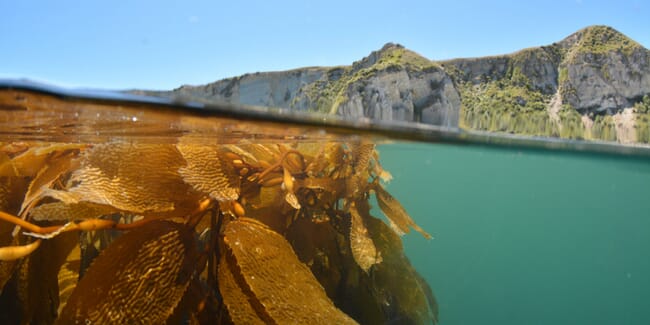
© Leigh Tait, NIWA
New Zealand currently only harvests wild seaweed, but the reports - which have been released by the Sustainable Seas National Science Challenge - argue for the development of seaweed aquaculture using an ecosystem-based management (EBM) approach.
The Species characteristics and Te Tiriti o Waitangi considerations report has reviewed six seaweed species groups identified for commercial development: karengo, Asparagopsis, agarophytes, lamanarians, fucoids and green algae.
“Our species are generally underdeveloped in regard to their commercial potential and there is an opportunity to produce and sell seaweed products that are different from those in other parts of the world,” explained Dr Serean Adams, project leader of Building a seaweed sector, in a press release.
But targeting high-value markets requires specific information on each species.
“Current knowledge of seaweed species is mostly focused on their ecology. Information about the biology and how to cultivate the species is sparse and scattered through scientific literature. This makes it difficult for those interested in developing a seaweed sector to access,” Adams adds.
Consequenltly, the report suggests one approach may be to build on the country’s existing bio stimulant and fertiliser markets, which could then be used as a platform to move into higher value products such as functional foods, food ingredients and health supplements or cosmeceuticals.
The report helps highlight the cultural importance of seaweed species to Māori and to support the role of Māori kaitiaki rights in the emerging seaweed sector.
“Māori have a particularly unique whakapapa relationship with flora and fauna and we need to acknowledge and respect that in the process of developing this sector,” said Andy Elliot, research and business development manager from Wakatū Incorporation, a whānau-owned organisation involved in seaweed research.
Practical experience in growing, processing and marketing seaweeds and seaweed products in Aotearoa New Zealand is limited. This could be an opportunity for iwi/hapū to be supported to create sustainable seaweed businesses founded on their vision and values.
The other report, Environmental effects of seaweed wild-harvest and aquaculture, recognises why an EBM framework is vital. It also highlights the potential for seaweed farming to improve ecosystems by helping with nutrient removal, shoreline protection, regenerative opportunities and sequestering carbon.
However, this report shows that many of the benefits (and risks) are site- and scale-specific, and there is associated uncertainty as a result.
“No matter what species are chosen, the development of commercially-viable farming systems is probably the most pressing hurdle to overcome,” explains Dr Adams. “This can be best achieved through leveraging overseas expertise, and by ensuring that knowledge generated through Aotearoa New Zealand research is publicly accessible. This enables farmers to ‘give it a go’ using approaches that are appropriate for the Aotearoa New Zealand situation.”




